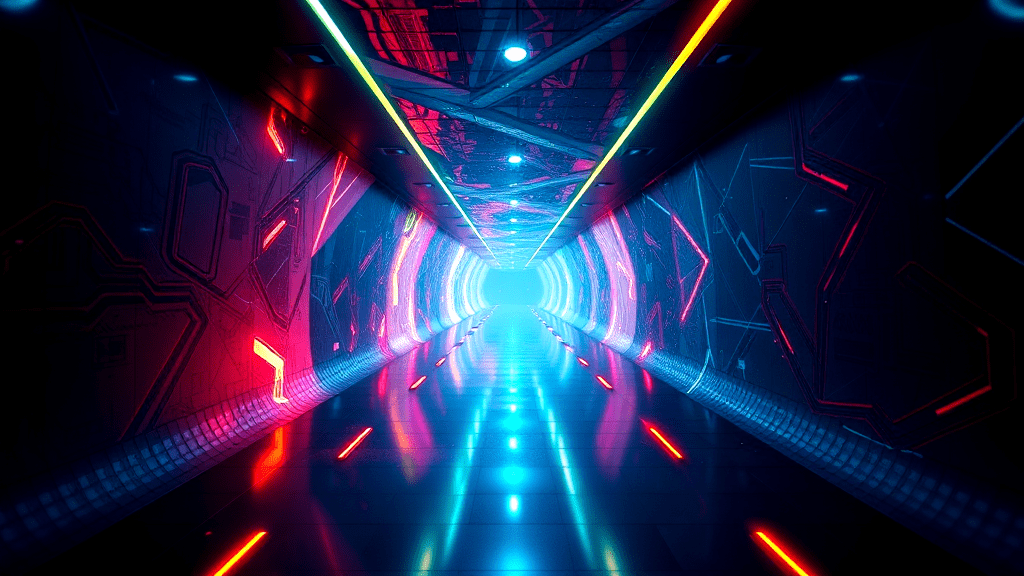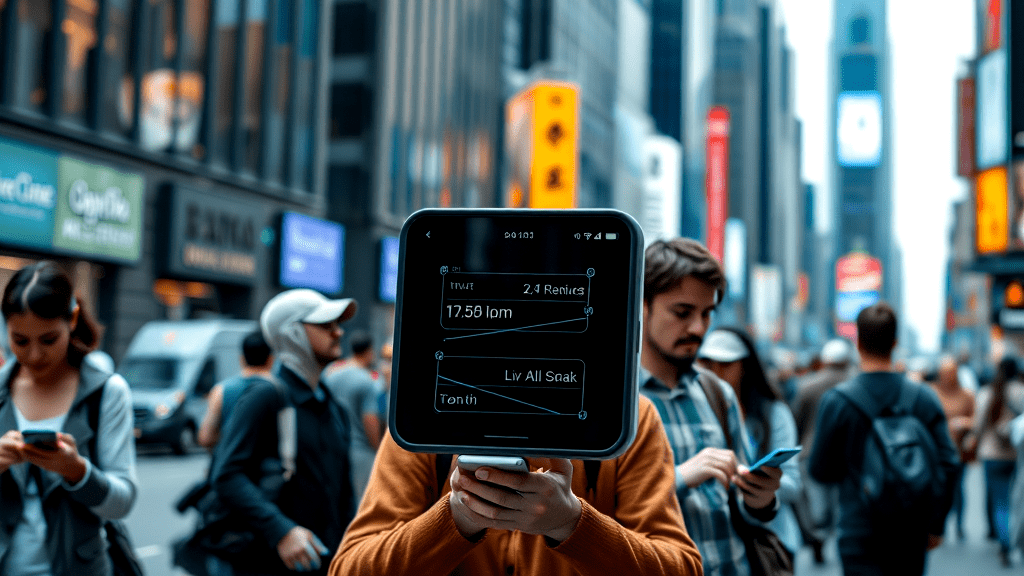Web Design
Web design is not just about making things look pretty. It’s about crafting an online space that’s easy to use and engaging for visitors. Think of it like setting up a cozy living room where guests feel welcome and can easily find their way around. Important elements, like responsive design, ensure your site looks good on any device, whether it’s a phone or a desktop.
Meanwhile, using the right colors and fonts helps convey your brand’s personality. Don’t forget about speed! A slow website can frustrate users. Also, consider working with a trusted tech partner program or a reliable private cloud provider for added support. And yes, even email marketing software plays a role in engaging online experiences.
Key Elements of Effective Web Design
Understanding the various aspects that make web design effective is like piecing together a jigsaw puzzle. A smooth user journey is paramount, guiding visitors effortlessly through your site. Consider how a responsive layout adapts to all screen sizes, ensuring everyone gets the same delightful experience.
Typography and colors aren’t just for show; they’re the silent communicators of your brand’s message. They whisper or shout depending on their usage, impacting how users interact with your site.
Navigational ease is like having a GPS for your website, helping visitors find what they need without getting lost. Speed is the turbo boost that keeps users satisfied, while white space acts as a breather amidst the digital chaos. Lastly, staying updated with trends keeps your design fresh and relevant.
The Role of User Experience
Understanding how user experience impacts web design reveals its undeniable importance. Imagine visiting a site that’s as confusing as a maze—users would leave faster than you can say “bounce rate!” A well-thought-out user experience ensures visitors feel like they’ve got a trusty map in hand. Think of it as creating a warm, welcoming home.
Visual hierarchies guide visitors’ eyes like a spotlight on stage, highlighting key information. Users need to find what they’re looking for with ease—a bit like a well-organized closet. And don’t forget the power of color; it communicates emotions without saying a word!
Incorporating interactive elements can spark curiosity, making users want to explore further. Keep an eye on trends; they’re the compass guiding the direction of future designs.
Responsive Web Design for All Devices
The magic of ensuring websites look stunning on every screen boils right into design’s responsiveness. It’s like having a chameleon that adapts to any environment. No more pinching and zooming on your phone—everything just fits.
Web design isn’t just about looking pretty. It’s about being functional too. Imagine your favorite restaurant with a door that won’t open. You’d leave, right? That’s what happens when a site isn’t responsive. Users bounce away.
Speed plays a part too. Who likes waiting ages for a page to load? It’s like watching paint dry.
And let’s not forget about being mobile-friendly. Ever tried reading a desktop site on your phone? It’s like trying to read a book through a keyhole.
Importance of Visual Hierarchy
Grasping visual hierarchy’s significance in web design is like having a map in a maze. It guides users effortlessly, spotlighting key information with precision. Think of it as a director orchestrating attention, ensuring users aren’t lost in digital chaos. Employing color and contrast effectively creates a path for the eyes, highlighting essential content. Just like a lighthouse in a storm, this hierarchy steers users to safety, boosting engagement.
Typography choices can whisper or shout, shaping perception and branding. It’s like choosing the right outfit for an event—critical for making the right impression.
In this digital arena, designers must wield this tool wisely, making sure users stay on course. Embracing visual hierarchy elevates the user experience, making navigation intuitive and enjoyable.

Typography Choices in Web Design
Selecting fonts in web design is akin to picking the perfect pair of shoes. They need to fit well, stand out, and walk users through your site smoothly. Fonts should harmonize with your brand voice, helping convey your message without distractions. Mixing too many styles can confuse users faster than a cat in a dog park! Simple, readable fonts ensure your content is accessible to all—no secret decoder rings required.
In the realm of web design, consistency is key.
The right font size and spacing can guide users like breadcrumbs through a forest. Colors can either complement the typography or make it pop, creating a visual symphony. Ultimately, the goal is to direct attention without overwhelming the senses—like a gentle nudge rather than a blaring horn.
Color Theory and Web Design
In the vibrant realm of combining color theory with website design, the right hues can significantly impact user engagement. Colors evoke emotions and set the tone, guiding visitors’ perceptions and interactions. Choosing a harmonious palette is like selecting the perfect outfit for your website—it must resonate with your brand and audience.
A sharp contrast between text and background ensures readability, while a consistent scheme fosters visual comfort. The strategic use of complementary or analogous colors can highlight calls to action, directing users effortlessly.
Remember, too much color can overwhelm like a kaleidoscope gone wild! Instead, balance is key. Keep it simple and intentional. The result? A visually appealing site that keeps your audience coming back for more. So, embrace the power of color in your web projects.
Navigational Structures Explained
Dissecting the complexity of navigational structures can feel like untangling a knot. How do you make sure users easily find what they’re looking for? Well, think of your site as a treasure map. You want clear paths and markers.
Keep the menu straightforward and logical, like following breadcrumbs. Use familiar symbols so users don’t feel lost in a maze. A search bar is a lifesaver for those in a hurry—like a compass pointing north.
Don’t cram everything into the main menu; submenus are your friend, but don’t overdo it. Too many choices can overwhelm, like being in a candy store.
Breadcrumbs help users retrace their steps without backtracking. Remember, every click should bring users closer to their goal, not further away.
Speed Optimization for Websites
Speeding up websites involves shaving seconds off load times, making a huge difference. This isn’t just about faster pages; it’s about keeping visitors happy. Slow websites are like waiting for paint to dry—frustrating. And folks these days? They’re impatient. They click away faster than you can say “loading.”
Using smaller images and caching does wonders. Imagine trimming a bush; it makes everything neat and tidy, right? Similarly, reducing image size and using browser caching speeds things up. Also, too many plugins? Like clutter in a room, they slow you. Trim them.
Minifying CSS and JavaScript files is another trick. It’s like squeezing toothpaste—get every last bit out. Lastly, a good hosting service is like having a reliable car engine. It keeps everything running smoothly. These steps ensure your web design doesn’t just look good but moves like lightning too.

Web Accessibility Standards
Adhering to universal standards in website creation ensures everyone can access your content. Weaving accessibility into the design process is like adding a secret ingredient—everything just works better. It’s about making sure all users, regardless of abilities, can interact with your site seamlessly.
Pay attention to color contrast and text size. Little tweaks in design can make a big difference for visibility. Structure content logically. Screen readers rely on proper headings to assist users.
Keyboard navigation is another crucial piece. Users shouldn’t feel like they’re trying to solve a puzzle just to navigate.
Testing often? That’s like having a regular check-up to catch issues early. Creating inclusive designs is not just a trend, it’s a necessity. After all, the web is for everyone, right?
Utilizing White Space Effectively
Using white space cleverly in web design can be a game-changer. It guides the eyes and breathes life into a cluttered page. Ever notice how your mind relaxes when things aren’t crammed together? That’s the magic of white space.
It’s not just about aesthetics; it’s about making content digestible. When web elements aren’t elbowing each other for room, users find what they need faster. Like giving your brain a hammock to rest in while browsing!
On the flip side, too much empty space can make a page feel barren. Balance is the key. Think of white space as the quiet friend who knows when to speak up. A dash here and there can emphasize important content without shouting. It’s subtle yet powerful, transforming the user’s journey without them even realizing it.
Integrating Interactive Features
Incorporating dynamic elements into your Web design projects can transform the user journey. Imagine a website where interactive features make the experience feel personalized and engaging. Think sliders that let users control their viewing experience or pop-ups offering real-time feedback. These aren’t just bells and whistles; they encourage visitors to stick around.
Consider a site with an interactive quiz. Users aren’t just reading—they’re participating. This involvement increases time spent on the page and can boost conversion rates.
More Important Features
But, it’s not all about razzle-dazzle. Too much interaction can overwhelm, like a fireworks display that’s gone haywire.
Finding that sweet spot is crucial. A sprinkle of engaging elements can make your Web design not just a site, but a memorable visit.
The Impact of Mobile-First Design
Mobile-first design is reshaping the rules of web creation. Prioritizing mobile users means designers craft specifically for smaller screens first, often leading to cleaner and more efficient layouts. This approach encourages simplicity, ensuring essential content shines without unnecessary clutter.
Shifting focus from desktop to mobile forces designers to rethink traditional web practices. This change can significantly improve the user experience, as it aligns with the growing trend of mobile browsing. It’s like designing a cozy, compact home with no wasted space.
By embracing a mobile-focused strategy, businesses can stay competitive in a crowded market. Remember, with more users browsing on-the-go, a sloppy mobile site isn’t just a hiccup; it’s a missed chance. A mobile-first mindset ensures accessibility, engaging users with swift, seamless navigation. Keep your digital door open.
Trends Shaping Web Design Today
The shifts in Web design today are akin to a whirlwind of innovation. Designers are now integrating advanced elements to create more interactive experiences. Think of websites where users can engage deeply, not just scroll. These sites are visually appealing and functionally robust.
Further Trends to look out for!
Additionally, there’s a focus on user-centric interfaces that adapt fluidly to different devices. This ensures a smooth experience whether you’re on a tablet or a desktop. Visual hierarchy and typography are also under the spotlight, guiding users effortlessly through content. Throw in a splash of color theory, and you’ve got a site that not just informs but also delights. So, what’s the secret sauce? It’s the clever blend of aesthetics and usability, ensuring websites not just look good, but feel good too.
Choosing the Right Web Design Tools
Selecting the appropriate tools for web design can be a game changer. With a multitude of options available, prioritizing user-friendly interfaces and compatibility with various devices is crucial. Consider tools that streamline workflows and offer robust features for responsive design.
Typography tools can enhance readability, while color selection software helps evoke the desired emotions. Don’t overlook tools that aid in creating intuitive navigational structures, as these enhance user experience. Speed optimization tools are indispensable for reducing load times, boosting user satisfaction.
Ensure compliance with accessibility standards using specialized checkers.
Tools offering interactive features can make your design more engaging. Keeping an eye on current design trends will help in selecting tools that align with industry standards. This approach ensures you stay competitive and deliver top-notch digital experiences.
Liberation Technology Web Design is a cutting-edge approach that prioritizes freedom, accessibility, and user empowerment in the digital space. It focuses on creating websites that are open, secure, and censorship-resistant while ensuring seamless user experience and high performance. By leveraging decentralized technologies, open-source frameworks, and privacy-first principles, this design philosophy enables individuals and organizations to share information freely without restrictions.
What sets Liberation Technology Web Design above their competitors?
-
Freedom & Openness – Supports free expression and open access to information.
-
Privacy & Security – Implements strong encryption and decentralized hosting to protect user data.
- User-Centric Experience – Focuses on intuitive, inclusive, and accessible design for all users.
-
Future-Proof & Scalable – Adapts to evolving technology trends and digital rights concerns.
Whether you’re an activist, journalist, or business looking for a resilient and ethical web presence, Liberation Technology Web Design empowers you with a digital platform that values freedom, security, and accessibility.
Web design is more than just pixels and colors—it’s about creating a journey. Think of it as setting the stage for an online experience. Every choice, from typography to color, plays a part in the user’s interaction.
Conclusion
Consider the load time of a website. If it lags, users might just wave goodbye. And let’s not forget the importance of accessibility—everyone deserves a seamless experience, right? As technology evolves, so do design trends. Staying updated with these changes is like keeping your wardrobe fashionable.
In the end, choosing the right tools can make or break your design process. So, dive into the world of web design, keep experimenting, and let your creativity shine. Who knows? Your next design might just be the talk of the internet!


